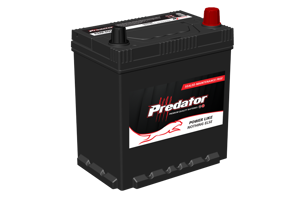What’s the Big Deal about Lithium?
There has been a lot of buzz about lithium-ion batteries in recent years. The demand for lithium batteries have grown exponentially due their widespread use in mobile phones, portable computers, power tools, e-bikes and life-saving medical equipment. Touted as the next big thing, lithium plays an important role in the world’s transition to cleaner energy solutions. Lithium batteries have been an enabler in electric vehicle development by increasing vehicle range and energy storage without adding excessive weight. They are a key component in renewable energy storage systems by storing any excess generated energy, and then delivering it when the renewable power source is not operating.

Despite the positives, lithium batteries also have their fair share of controversies. There are negative questions around the mining of lithium from an environmental standpoint. The mining of cobalt is also controversial because of ethical and human cost concerns.
There has been an increase in the number of lithium battery related fires sparking safety concerns. Lithium battery fires can occur if the battery is overcharged, damaged or disposed of incorrectly. They burn aggressively and can be very difficult to extinguish.
While all lithium batteries are generally lumped together in one category, it is important to note here that not all lithium batteries are created equal. The lithium ion category of batteries is very broad however there are a couple of battery types which are somewhat different to the rest.
What is a Lithium Battery?
A lithium ion battery is a rechargeable battery which uses the transfer of ions internally to store and deliver energy. Lithium is the most popular rechargeable battery chemistry used today.
Lithium battery cells are graded into A, B and C categories after manufacture. A-grade Lithium cells meet the manufacturer’s specifications within a tight tolerance whereas B and C grade cells are outside the specifications. A-grade lithium cells are exclusively used in ALLiON and Predator Lithium batteries. They come with a higher initial cost however are well worth the money in the long run.
Here are some interesting facts about lithium:
- Australia is the largest producer of lithium in the world
- Lithium is the lightest metal and solid element in the periodic table
- Lithium is a soft metal which is a light silver colour
- Lithium is soft enough to be cut with a knife and melts at 180°C
- Lithium is highly reactive and flammable in pure form and must be stored in oil
- Lithium does not occur by itself in nature, it is always in a compound
- Lithium is used as a lubricant (white lithium grease), as an additive to the production of iron, steel and aluminium, and in batteries.
Types of Lithium-Ion Batteries
There are many different types of lithium-ion batteries in use however they do not all have the same characteristics. The majority of lithium-ion batteries contain either nickel, manganese or cobalt (or a combination of these) as part of their chemical reaction. While these elements contribute to the efficiency of the cell, these cells are also susceptible to thermal runaway which will often result in a battery fire.
Lithium Iron Phosphate (LiFePO4 or LFP) and Lithium Titanate (LTO) batteries do not use these rare earth metals in their composition. While they do not have the same high energy density as many other lithium ion batteries, their safety, cycle life and overall performance make them a better option.
Lithium Iron Phosphate (LFP)
Lithium Iron Phosphate (LiFePO4) batteries have superior thermal and chemical stability making them one of the safest lithium battery chemistries on the market because they are not susceptible overheating and thermal runaway. LFP cells also have a higher tolerance to extreme temperatures and hazardous events.
LFP batteries are also known for their long lifespan and cost effectiveness. Depending on the Depth of Discharge, they have a lifespan of between 3000 and 6000 cycles before needing replacement.
Advantages
- Safe
- Long cycle life
- High energy density, compared to lead acid batteries
- Wide temperature range
- Lightweight
- Thermal stability
- Fast charging
- Environmentally friendly & non toxic
Disadvantages
- High initial cost
- Lower energy density, compared to some other lithium-ion batteries
LFP batteries are commonly used in 4x4 and camping, UPS systems and solar energy storage systems. Our ALLiON and Predator Lithium batteries are powered by Lithium Iron Phosphate technology.
Lithium Titanate (LTO)
The standout feature of Lithium Titanate batteries is are their exceptionally long cycle life. LTO batteries have a rated cycle life of more than 20,000 cycles which is unmatched by any other battery. LTO batteries are not as light as other lithium based batteries however they can be fast charged which makes them suitable for applications where weight is not a critical factor like energy storage systems or electric buses.
The manufacturing process of LTO batteries is expensive due to material costit and the complexity of the manufacturing process. LTO batteries are produced in limited quantities which affects the economies of scale.
Advantages
- Ultra high cycle life
- Safe
- Wide temperature range
- Fast charging
- Thermal stability
Disadvantages
- High Cost
- Lower energy density
- Lower cell voltage
LTO batteries are suitable for applications that require longevity and durability such as solar energy storage systems.
The Last Word
There is no doubt that lithium is here to stay. Advancements in this space will see more and more applications being powered by Lithium batteries in the coming years. However due to some limitations of lithium they will never truly replace lead acid batteries. Lead acid batteries are cheaper, materials are easier to source and they are 97% recyclable; so they will always continue to play a pivotal role in providing power within our society.
When selecting a lithium battery, consider factors such as the useable capacity, cycle life, weight, cost, safety, operating temperature range and warranty. If you need help, please contact the friendly team at your local R&J Batteries.



